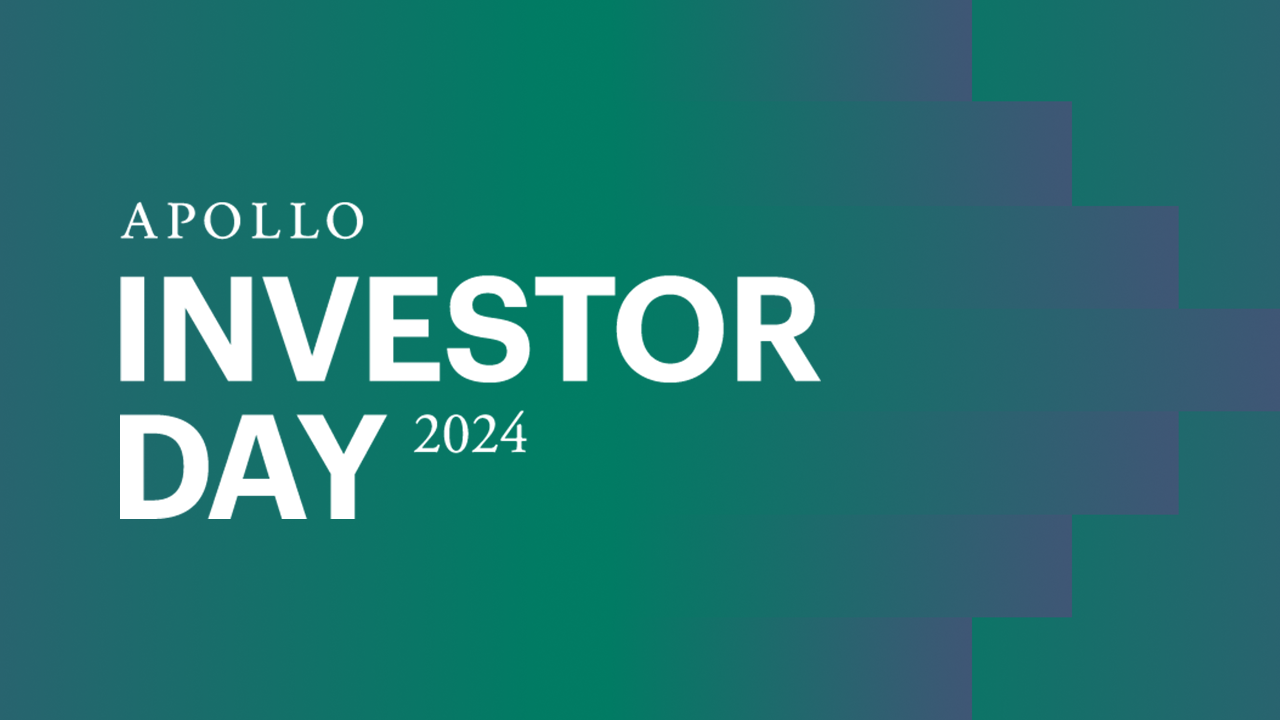July 06, 2023
6 Takeaways from Apollo’s Portfolio Tech & Digital Conference

Apollo recently hosted its inaugural Technology & Digital Conference for leaders from over 35 of Apollo funds’ portfolio companies.
Recently, Apollo hosted its inaugural Technology & Digital Conference in Boston for leaders from over 35 of Apollo funds’ portfolio companies representing a wide range of industries from aviation to information technology. Over two days of programming, speakers from the Apollo Portfolio Performance Solutions (“APPS”) team and leading outside experts on Digital, Technology and AI shared insights on emerging trends and best practices for leveraging technology and digital transformation to help create value.
A day before the conference at the nearby MIT CIO Symposium, Apollo announced its inaugural PE Technology Leader of the Year award, which recognized Ashok Kumar, CTO of Brightspeed, for his leadership. Celebrating high achievement in the industry set the tone for the Apollo event that followed. Key takeaways from the panel discussions are provided below:
1) Sustainable Digital Transformation is Paramount to Creating Business Value
Companies should first set up and solidify their platforms and capabilities before they think about driving meaningful business transformation through technology. Technological disruptions are now occurring concurrently and with more frequency, but having a strong foundation can help companies to navigate changing industry dynamics and avoid transformation fatigue. Linking digitization to core business processes is essential to stand up modern platforms and should be top-of-mind for leaders.
As an example, Brightspeed was among the first telecommunications companies in North America to set up a complete cloud-native platform for both operations and business services, which is tightly linked to the company’s value creation plan.
"We think about Digital from Day 1 of thesis generation. The most critical question we ask ourselves from the start is: ‘how is digital linked to the business thesis?"
Vikram Mahidhar, Operating Partner, Data & Digital Transformation, Apollo Portfolio Performance Solutions
2) Data Modernization Should Focus on Highest Value Use Cases
Data modernization can be a multi-year journey requiring a significant upfront investment in data foundation. Businesses should first focus their strategies on delivering against their highest-value use cases, while building their data foundation iteratively. For example, while monetizing data may be an attractive use case, it may take much longer to build the associated data products. In the short run, it’s often more prudent to empower sales leaders with product profitability and customer analytics. Looking ahead, as AI continues to disrupt industries and new applications, companies should orient their AI-focused data modernization efforts toward areas where they can capture the most value.
3) Cloud Modernization Should be a Strategic Play
To cut infrastructure costs and take advantage of modern software tools, businesses often rush their cloud transformation journeys. In the process, they may neglect to build cloud-native applications or customer journeys, and instead optimize the existing code base written for non-cloud infrastructure and migrate it to cloud. This type of optimization effort may not be strategic over the long term and can set companies up to incur higher costs in the future.
Businesses should design their cloud transformation plans around four dimensions: 1) alignment with a strategic value creation plan; 2) optimization of architecture to maximize value from cloud-native capabilities; 3) financial modeling and continuous optimization; and 4) leveraging the right partners for talent.
4) Successful Technology Leaders Move Forward Amidst Uncertainty
CEOs increasingly want Chief Information Officers that can clean up and secure existing IT while building new digital businesses at the same time. CIOs sometimes must make bets on their IT strategy while their business strategy is still evolving. Effective CIOs recognize this as a reality of the job and leverage their deep technological expertise and experience of their teams to continue to move transformation forward, rather than letting uncertainty stagnate progress. Effective technology leaders continuously upskill themselves and their talent.
"The best technology leaders today are strong athletes – versatile transformation leaders that have technology expertise."
Steve Faas, Operating Partner, Technology Transformation, Apollo Portfolio Performance Solutions
5) Technology Organization Should Tightly Align to Strategic and Financial Goals
Successful technology organizations often “change the parts while flying the plane.” In the process, they tend to accumulate technical debt resulting in significant sustenance costs. Higher debt levels and sustenance costs limit capacity for investing in strategic initiatives and innovation. Strong technology organizations proactively reduce their technical debt, obsolescence, and cyber security risks, while also investing in building new strategic assets.
For example, The Venetian Las Vegas recently invested in upgrading mission-critical systems to reduce technical debt and drive growth through customer experience transformation efforts. In the process, the company will also retire several legacy systems and the maintenance organizations behind them.
6) Cyber Defenses are Rapidly Improving, but Threats are not Slowing Down
Advanced cyber safeguards are deployed more widely than ever, but threats continue to increase. Complete cyber programs quickly adopt new technical capabilities, test internal processes from the help desk to the board room, and leverage the best people within and outside the firm.
Tags







